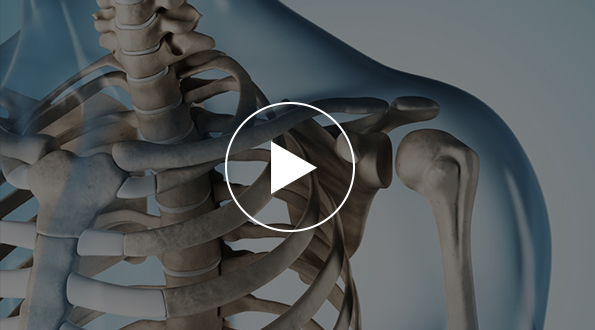 Carpal tunnel syndrome is a common condition that causes pain, numbness, and tingling in the hand and arm. The carpal tunnel is a narrow passage in the wrist where the median nerve passes, and this area can be easily irritated by a change in tissue pressure that causes the carpal tunnel to squeeze and compress the nerve. When irritated, the median nerve can cause tingling and numbness in the fingers, a condition known as carpal tunnel syndrome.
Carpal tunnel syndrome is a common condition that causes pain, numbness, and tingling in the hand and arm. The carpal tunnel is a narrow passage in the wrist where the median nerve passes, and this area can be easily irritated by a change in tissue pressure that causes the carpal tunnel to squeeze and compress the nerve. When irritated, the median nerve can cause tingling and numbness in the fingers, a condition known as carpal tunnel syndrome.
Carpal tunnel syndrome is a common condition that often affects people whose jobs require repetitive use of their hands, but can also occur without repetitive hand use. Diabetes, rheumatoid arthritis, and thyroid gland imbalance are diseases that are associated with carpal tunnel syndrome. Hormonal changes during pregnancy can cause swelling in the wrist and cause carpal tunnel syndrome. Pregnancy induced carpal tunnel syndrome usually resolves after delivery.
Carpal Tunnel symptoms usually begins as an ache in the wrist that may extend down to the forearm or up to the hand. Patients also experience tingling or numbness in the fingers or pain radiating through the entire arm, weakness in the hand, and difficulty grasping small objects. Early on, symptoms are gradual and inconsistent. They may become worse depending on what you are doing and go away when those activities end. As the condition worsens symptoms can be particularly bad during sleep. In advanced cases, symptoms can be nearly constant and very bothersome.
Night-time symptoms are very common as the condition progresses. Because many people sleep with their wrists bent, symptoms may awaken you from sleep. During the day, symptoms often occur when holding something for a prolonged period of time with the wrist bent forward or backward, such as when using a phone, driving, or reading a book. Patients often find that moving or shaking their hands helps relieve their symptoms and wake up to do that so they can get back to sleep.
In most patients, carpal tunnel syndrome gets worse over time, so early diagnosis and treatment are important. Early on, symptoms can often be relieved with simple measures like wearing a wrist splint or avoiding certain activities. Wrist splinting is particularly effective for night time symptoms. If pressure on the median nerve continues, however, it can lead to nerve damage and worsening symptoms. To prevent permanent damage, surgery to take pressure off the median nerve may be recommended for some patients.
Depending on the severity of the disease, CTS may improve with non-surgical treatment or require surgery. Non-operative treatment can include:
- Resting the hands: If you have been using your hands strenuously, sometimes resting will reduce the symptoms.
- Anti-inflammatory medication: These medications help reduce your swelling and pain by reducing inflammation.
- Corticosteroid injections: Corticosteroid, or cortisone, is a powerful anti-inflammatory agent that can be injected into the carpal tunnel. Although these injections often relieve painful symptoms or help to calm a flare up of symptoms, their effect is sometimes only temporary. A cortisone injection may also be used to help diagnose your carpal tunnel syndrome.
- Hand Splint or Brace: This helps keep your wrist from moving. It also eases the compression of the nerves inside the tunnel.
- Hand therapy: Stretching and strengthening exercises can be helpful in mild or early cases. Some patients may benefit from Nerve gliding exercises that help the median nerve move more freely within the confines of the carpal tunnel. These exercises should be supervised by a Certified Hand therapist.
When symptoms are severe or do not improve, surgery may be needed to make more room for the nerve. A carpal tunnel release involves releasing the Transverse Carpal ligament that forms the roof of the carpal tunnel to allow more room for the median nerve. This increases the size of the tunnel and decreases pressure on the median nerve. After surgery, the ligament may gradually grow back together—but there will be more space in the carpal tunnel and pressure on the median nerve will be relieved. It is an outpatient procedure requiring regional anesthesia and an approximate 1-inch incision.
The realistic risks of this type of surgery are very small and the benefit to the patient to preserve nerve function and improve symptoms is usually far greater than this risk. It usually alleviates the pain, especially the night time numbness and tingling.
You can start using the hand for light activities right away. The sutures are removed in 7-10 days and hand therapy is started. The discomfort around the incision will gradually improve and can be reduced with massage. Most people are able to return to light work in 2-3 days and heavy work between 4-6 weeks. After surgery, most people enjoy a full recovery from carpal tunnel syndrome and do not suffer from recurring symptoms. In some severe cases the symptoms will be significantly improved but may not completely resolve. That is why it is better to get treatment before permanent nerve damage occurs.

